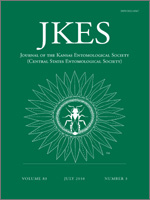The melittid bees represent an early branch of bee phylogeny. They are therefore of special interest in understanding the early evolution and diversification of bees. Most species have been observed to be oligolectic (i.e., highly specialized in their choice of host-plant species). However, knowledge of host-plant associations is not equivalent across all melittid groups. Dasypodainae and the Melittinae are relatively well-known, while the African Meganomiinae are poorly studied. Preliminary field records seem to indicate that at least some meganomiine species are oligolectic. Here we present the first palynological analysis of pollen loads and pollen preference in Meganomiinae. Our results indicate that M. binghami is clearly a polylectic species. More data are needed to draw conclusions on the foraging behaviour of the other Meganomiinae. Our results show that, while oligolecty is widespread among melittid bees, there are polylectic lineages as well.
How to translate text using browser tools
1 July 2010
Unexpected Polylecty in the Bee Genus Meganomia (Hymenoptera: Apoidea: Melittidae)
D. Michez,
C. D. Eardley,
K. Timmermann,
B. N. Danforth
ACCESS THE FULL ARTICLE
host plant associations
oligolecty
palynology
polylecty





